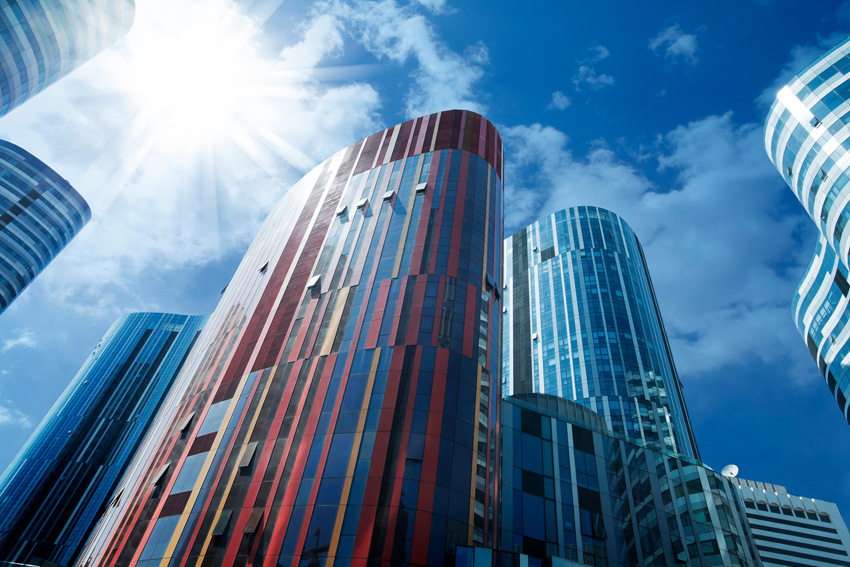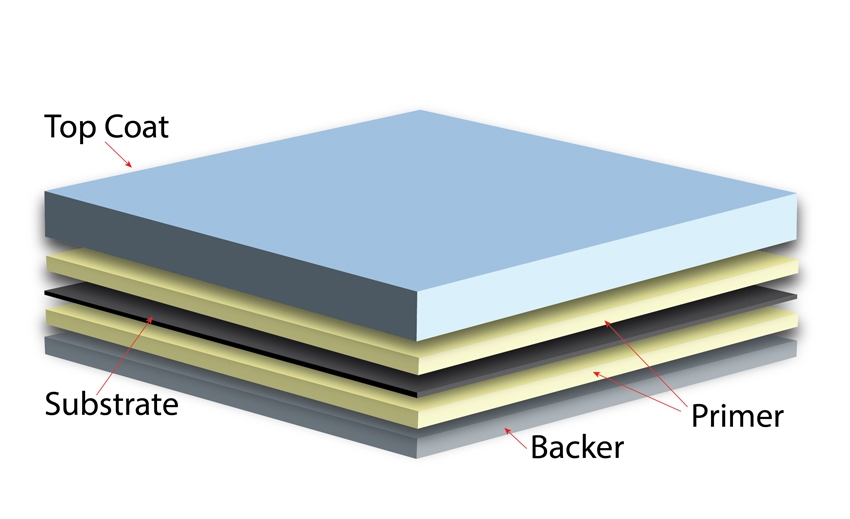Creative Building Solutions with Pre-Painted Metal Panels
Learning Objectives:
- Investigate the overall process of fabricating prepainted metal for use in building design and construction.
- Describe how advances in prepainted metal have enhanced aesthetic options and improved performance of metal building systems.
- Identify and recognize the broad range of design and performance aspects associated with prepainted metal related to safety and welfare.
- Assess the functional contributions of prepainted metal as they contribute to green and sustainable design including protection of human health.
- Specify prepainted metal in a variety of green and conventional buildings and formulate appropriate selections related to specific applications.
Credits:
This course is approved as a Structured Course
This course can be self-reported to the AANB, as per their CE Guidelines
Approved for structured learning
Approved for Core Learning
This course can be self-reported to the NLAA
Course may qualify for Learning Hours with NWTAA
Course eligible for OAA Learning Hours
This course is approved as a core course
This course can be self-reported for Learning Units to the Architectural Institute of British Columbia
Steel and aluminum are used extensively in design and construction because they are durable, formable, and sustainable metals. In particular, pre-painted metal, also referred to as coil-coated metal or precoated metal, is commonly used on the exterior of all types of residential, commercial, institutional, and industrial buildings, both as exterior wall cladding and for metal roofing including related trim and accessories. Part of the reason for its ongoing success and growth is the development of metallic coatings for steel substrates, as well as advanced chemical pretreatments for all metal substrates, along with organic coatings that protect the metal from rust and corrosion. Relatedly, these advances in pre-painted metal roof and wall panels have contributed significantly to the growth of the metal building industry and provided unlimited options to create virtually any architectural vision.

Photo courtesy of National Coil Coating Association (NCCA)
Pre-painted metal products are commonly used on building facades and roofing to create economical, sustainable, and well-designed buildings that perform extremely well over the long term.
A distinction needs to be made between paints and coatings since there is a difference. Simply put, paint is for aesthetics, and a coating is for performance. Paint can be applied to a variety of surfaces using many different application methods. While there are some protective qualities that come with painting, this is not the real purpose of paint (e.g., drywall can still be damaged by water, etc.). Coatings are formulated specifically to protect the substrate and withstand, in this case, extreme weather conditions and maintain the aesthetic beauty of the metal building products. Pre-painted metal in this course will refer, nonetheless, to metal that has been both coated and painted.
The advancement of coating and painting formulations offers not only protection but also a wide variety of design options that include a full range of color and texture possibilities. Further, when the coating is factory applied, it is more consistent, durable, and environmentally friendly than other alternatives. The appeal of pre-painted metal includes mechanical strength, corrosion resistance, and an excellent base substrate upon which to apply advanced paints. Based on all of these factors, this course looks more closely at the multiple traits of pre-painted coiled metal. Specifically, it delves into the process of creating pre-painted metal, the design and performance aspects that can result, the green and sustainable characteristics of the products, and some insights into selecting and specifying durable, attractive, and sustainable metal building components.
PRE-PAINTED METAL OVERVIEW
Metals are produced in mills into a variety of products. Structural steel members, for example, are formed using heat and traditional forging processes into sizes and shapes suitable for buildings, bridges, and other structures. The weight and dimensional area of these shapes typically determine the inherent strength of these products. By comparison, mills also produce coils of metal in a different process involving heating and rolling of the metal into a continuous ribbon that is coiled up onto a roller. In these cases, it is the thickness (i.e., gauge) of the metal that determines the profiles that can be rolled most effectively from the coil, making it suitable for a variety of subsequent uses. While its width is determined by the milling process, individual sheets of steel can then be cut to length before, during, or after a post-forming process at a separate fabricating facility. The most common post-forming process of the coiled sheet steel is that of cold-forming (i.e., no significant added heat, just a series of rollers to shape the steel as it passes through). This is used to turn flat, coiled sheet steel into metal shapes, such as creating cold-formed metal studs, metal girts and purlins, metal wall panels, metal roof panels, metal trim, or metal accessories. This cold-formed bending and shaping of the metal can also add strength through the creation of structural “L” or “U” shapes or simply by adding rounded or squared corrugations to the flat metal, thus adding stiffness.
Material Options
There are two fundamental substrate choices for pre-painted metal in buildings: steel and aluminum. Steel is generally found to be the more economical option for many building products and has become a highly engineered material for both performance and appearance. Steel is known for its strength, even in coiled or sheet products with yield strengths ranging from 40,000 to 80,000 pounds per square inch (psi). Aluminum, by comparison, is lighter in weight than steel but does have a very high strength-to-weight ratio. Compared to steel, though, aluminum has generally lower yield strengths on the order of 18,000–30,000 psi, meaning it is a somewhat softer material and easier to form. Both metals are quite commonly used nonetheless and typically incorporate high amounts of recycled content—with full recyclability possible at the end of their service lives.
The primary difference between the two metals is their ability to resist corrosion. Untreated steel will interact with air and water and eventually rust and corrode. Aluminum does not react the same way. When exposed to the environment, it quickly forms a microscopically thin aluminum oxide layer, which provides inherent corrosion resistance. To create such a protective layer on steel, it is routinely coated by a hot-dip coating method with other specific metals to assure its integrity over the long term. There are three common metallic coatings that rely on hot-dipping steel sheet into a bath of molten zinc or a zinc/aluminum alloy as follows.
- Galvanized steel sheet, also known as hot-dipped galvanized (HDG), is coated with a 100 percent zinc metallic coating. This provides excellent sacrificial corrosion resistance, meaning that the zinc coating reacts to the source of corrosion (typically water and other elements), thus sacrificing itself to protect the steel. Galvanized sheet for metal roofing products, for example, is typically produced in a G90 (0.90 ounces coating per square foot total both sides) to achieve the desired level of protection.
- Galvalume® steel sheet is a highly corrosion resistant product with a metallic coating composition that is 55 percent aluminum and 45 percent zinc. This coating combines sacrificial protection from zinc with the durability and barrier protection from aluminum. The barrier protection of the aluminum simply means that it provides a nonreactive physical barrier between the steel and the source of the corrosion. At the same time, the zinc in Galvalume provides protection on exposed cut edges and places where the coating may become scratched. Galvalume sheet for roofing is produced as either AZ50 (0.50 ounces coating per square foot total both sides) or AZ55 (0.55 ounces coating per square foot total both sides). An AZ55 coating can have larger spangles or patterns on the surface that might be a factor in selecting a compatible pre-paint.
- Galfan is a third option that is produced with a metallic coating of 95 percent zinc and 5 percent aluminum. This product claims enhanced sacrificial corrosion resistance and excellent formability, but it is used much less on building products compared to galvalume or galvanized steel.
Because of aluminum’s inherent corrosion resistance, it does not require metallic coatings as described above for steel.

Image courtesy of the National Coil Coating Association (NCCA)
Pre-painted coil-coated metal consists of a base metal material that is coated on both sides with primer and finish coats or backers.
Coating Process
Hot-dipped steel or aluminum can be installed without a coating, but this is not the common approach, particularly for exterior applications. Instead, a coating is commonly applied to the metal. The most cost-effective, durable, and reliable way to do this is to pre-paint the metal in a controlled factory setting. This allows for the paint and coating to be “cured” using heat much the same way that automobile paint is applied for a long-lasting, durable finish. This pre-applied coating does two things. First, it provides a fundamental level of protection to the metal against weather, sun, and other elements. Second, it allows for a wide range of design flexibility by selecting one or more finish options (color, texture, etc.) for the metal that is consistent with the design intent of the building.
The process of applying the coating begins with a coil-coating facility that receives coils of steel or aluminum in the desired size and thickness/gauge. The coil(s) are placed into a processing sequence where the metal is first unrolled, accumulated, and readied for further processing. Both sides of the core metal are then cleaned and receive a chemical conversion coating. When the metal is dried, it is then primed on both sides by passing through a coater and a curing oven. When ready, it continues on to a finish coater—the exposed side receiving a finish top coat, and the concealed side receiving a backer coat. Typically, the primer and finish coats of the exposed side of the metal are thicker than the coats of the concealed side of the metal.

Image courtesy of the National Coil Coating Association (NCCA)
Pre-painted coil coating is a process that is fast, tightly controlled, and environmentally friendly.
It is worth noting the rate at which coiled metal is processed (i.e., cleaned, pretreated, primed, and top-coated) on a typical coil-coating line. The metal strip is processed at speeds up to 700 feet per minute, and the strip itself is usually about 4 feet wide. This means a metal strip 4 feet wide being processed at a rate of 700 feet per minute produces 2,800 square feet of coated metal per minute. Of course, not all coating lines operate at this maximum speed, so a more typical output may be 1,500–2,500 square feet per minute. Most other application processes (such as spray painting) require at least 10 times longer to equal the area coated by the coil-coating process. In fact, no other painting process is as fast, tightly controlled, and environmentally friendly as the coil-coating process.
















